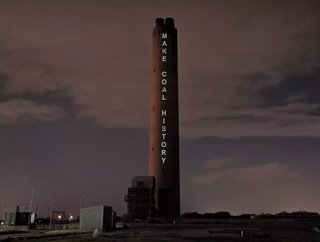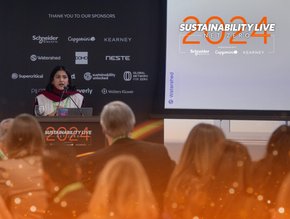Scotland ignites green investment but oil remains key

The symbolism was irresistible. As Nicola Sturgeon yesterday pressed the button which detonated the Longannet chimney which has dominated the Firth of Forth skyline for 50 years, the collapse marked the end of the country's coal-fired power generation era.
Coming soon after Glasgow's hosting of COP26, it resembled 700kgs of political dynamite too, showing words are being backed by actions.
In reality, Scotland has been coal-free since ScottishPower closed the station in 2016. At the height of operations, it burnt coal from around the world including Scottish open-cast coal and coal from as far away as Russia and Colombia. Typically, it consumed 4 million tonnes of coal per year and at full production could produce enough electricity to power two million homes.
Today the energy company now only generates 100% green electricity through its wind and solar farms.
Scotland aims to generate 50% of overall energy consumption from renewable sources by 2030 and be net zero by 2045. It recently announced more than 40 companies based in Scotland will benefit from over £10 million of Scottish Enterprise green jobs funding.
Keith Anderson, chief executive, ScottishPower said watching the chimney of Scotland’s last coal-fired station fall represents a milestone, as the UK moves away from the large polluting power stations of the past and accelerates towards net zero emissions.
Yet as the chimney dust settles, Scotland's energy profile remains a hazy picture.
More than 40,000 jobs depend on oil and gas. Aberdeen, despite impressive renewable and hydrogen development strides, has been synonymous with oil since October 1970 when BP struck oil 110 miles off the coast in what was later to become the giant Forties field.
More recently, Shell's withdrawal from the Cambo oil field development in the Shetlands illustrates the central dilemma in the transition, as Scotland endeavours to fuel green investment while revenues that have been integral to the country's economy lie on the seabed. Cambo's first phase alone would produce 164 million barrels.
Oil and gas industry contributes £112 million Gross Value Added to the Highlands and Islands economy, providing jobs for 900 people across the region.
North Sea industry group Oil & Gas UK estimates up to £21 billion could be spent in the basin over the next five years if Westminster approves applications for 18 licences to extend the life of existing fields, including Cambo.
But Ignacio Galán, Chairman of ScottishPower and Iberdrola, insists the future can only be about clean energy.
“This transition is essential to minimise the worst impacts of global warming and address the climate emergency. Iberdrola will continue to invest billions of pounds in renewables, smarter grids and storage to become net zero in Europe by 2030, providing abundant and competitive electricity and creating opportunities for industrial development and jobs across the value chain.”
As of June 2019, Scotland has 11.6GW renewable energy and 13GW pipeline. The world’s first floating windfarm - Equinor's Hywind Scotland, and the world’s first large scale tidal array, MeyGen - are both located in Scottish waters.
Last month a UK Government grant was secured to develop the UK's first wind blade turbine recycling plant.
The £2million, three-year project involves a consortium led by Aker Offshore Wind and Scottish researchers, with the aim of ensuring a more sustainable future for the global wind industry and the wider composites manufacturing industry.
Strathclyde Principal Professor Sir Jim McDonald said wind energy is a key component of the transition to net zero and it is essential that the technology and materials that provide renewable energy are as sustainable as they can be.
"As we have seen at COP26 in Glasgow, a global move to renewable, sustainable sources of energy will help to make some of the biggest advances in the quest to tackle climate change. At Strathclyde, we have developed novel processes for recycling and reusing wind turbine blades, which will help to reduce waste in the renewables sector and wider industry."
Meanwhile the demolition of Longannet is being carried out by ScottishPower contractor Brown and Mason and work to remove materials at the site will continue into 2022.
Removing oil and gas from Scotland's energy equation will doubtless take a good deal longer.






